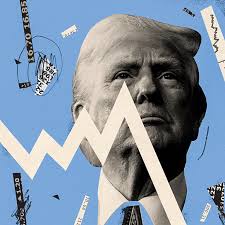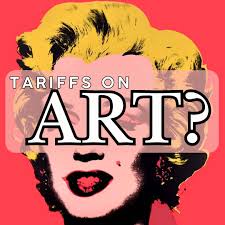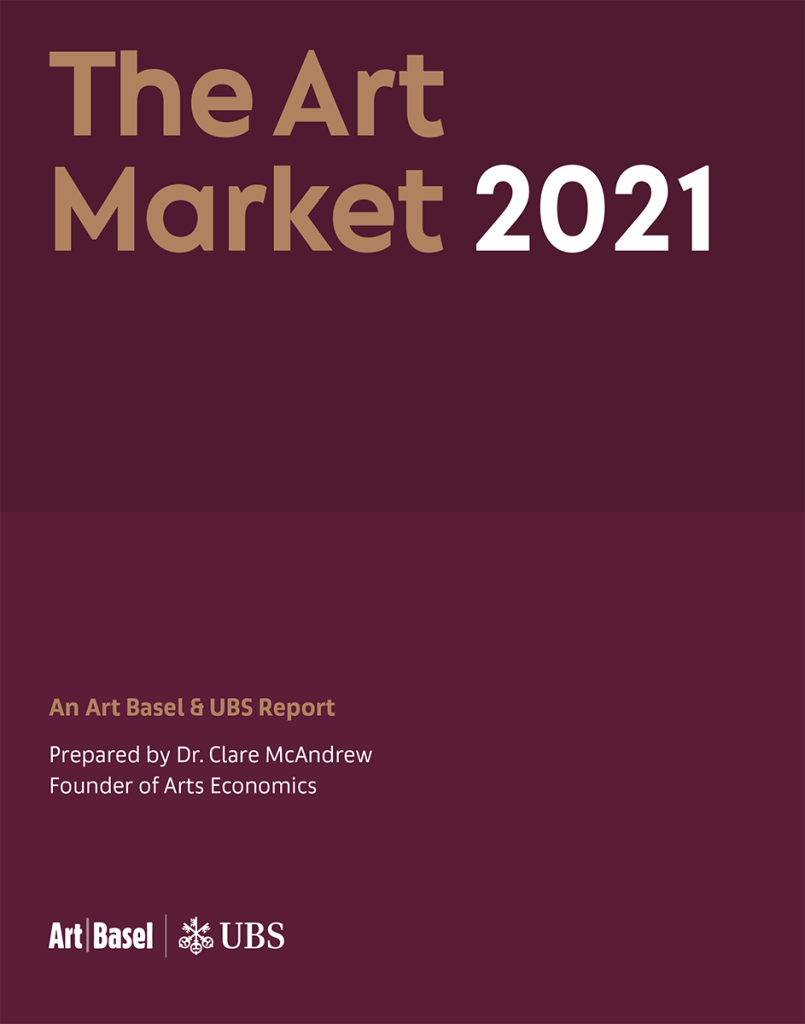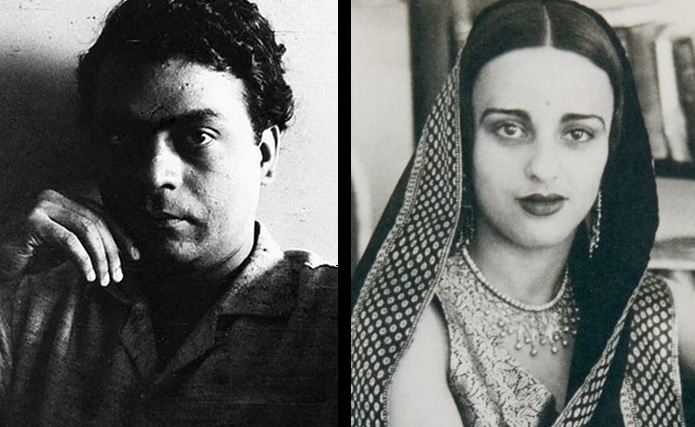Few know about David Ricardo’s 1817 theory of comparative advantage, which explained why trading between countries benefits everyone involved. Over the past 200 years, while the global population grew five times larger, average income per person increased more than eight times—15 times faster than in the previous 800 years. Simply put: trade creates wealth.
Trump’s Tariffs and Why They Matter

In August, President Trump imposed global tariffs that raised import taxes to their highest level since 1933. This matters because the US is the world’s largest economy, consuming about one-third of all goods and services globally. Since World War II, it has also been the world’s largest art market.
Trump claims these tariffs will bring jobs back to America, increase tax revenue, and eventually force other countries to lower their own tariffs. However, most economists predict the opposite: less trade overall, higher prices, and potential job losses depending on how other countries respond.
Why should the art market care? Throughout history, the art market has thrived when money flows freely and people and goods can move easily across borders—both products of international trade. The market typically grows during periods of economic expansion and open trade. Since the 1960s, when art trade was first systematically tracked, the market has grown each decade, and the number of countries participating has increased five times.
History shows two periods when tariffs clearly hurt the art market:
Late 1800s to Early 1900s
From the 1860s onward, tariffs among 35 countries rose to over 15% by the 1880s. In the US, import tariffs peaked at 47% in the 1860s before settling at 20-30% by 1913. Countries like Russia, Spain, Japan, and France raised tariffs ranging from 20% to 84%. Meanwhile, Britain maintained free trade, and countries like the Netherlands and Belgium kept tariffs low.
The effect on art: The market became more volatile and uncertain. In Britain, art imports boomed in the 1850s and 1870s but declined during the economic depression of the late 1800s. Auction prices rose and fell repeatedly—climbing from the 1840s, slumping in 1875-85, surging and falling again in 1891-1901, then peaking in 1913. In the US, auction prices fluctuated frequently but more modestly until 1903, after which they rose sharply to peak in 1918—just as tariffs fell to their lowest level in a century.
The 1920s and 1930s: The Great Depression Era
After World War I, US tariffs were lowered but then gradually increased through the 1920s, culminating in the Smoot-Hawley Tariff Act of 1930—a policy one British official called “a turning point in world history.” These tariffs were meant to protect American farmers who had suffered economic collapse. The result was catastrophic. Global trade collapsed by 25% between 1929 and 1934 due to higher tariffs, import limits, and currency controls. Britain and other countries responded by raising their own tariffs even higher than America’s.
The effect on art: The market suffered badly. In Britain, auction prices fell by more than half after peaking in 1913, doubled in the 1920s, then collapsed again after 1929. Prices didn’t return to 1929 levels until 1959—and didn’t match 1913 levels until 1967. In the US, prices peaked in 1918, crashed between 1929 and 1932, then recovered gradually. It took until 1953 to return to 1918 levels.
Changing tastes in the 1920s and 1930s:
• Artists like John Singer Sargent fell out of fashion
• British masters like Reynolds, Gainsborough, and Turner became popular
• Rembrandt and Van Dyck lost favor
• Italian Renaissance art and Impressionism gained value
• Modern art attracted growing interest
The primary market (new art) remained dynamic: Despite economic hardship, Modernism flourished across Europe, the US, and Asia. Many artists earned extra income through design work, advertising, and teaching. Major Picasso exhibitions occurred in the 1930s, and a new generation of American Modernists emerged—setting the stage for the post-war art boom when free trade returned.
What This Means Today—and for India
Hopefully, Trump’s tariff experiment will be reversed or lead to lower global tariffs, as happened in previous episodes. If not, we should take inspiration from the 1930s art world, when artists, dealers, and galleries adapted and diversified to survive.
For the global market: We may find ourselves buying more art from less familiar regions, though with fewer opportunities to sell into the dominant US market—meaning potentially lower prices. However, as developed countries and China age and slow down economically, while younger, faster-growing economies expand, diversifying geographically may prove wise.
For the Indian art market specifically:
1. Opportunity for growth: As the US market becomes less accessible due to tariffs, collectors and dealers worldwide may look to emerging markets like India. India’s economy is growing faster than most developed nations, and its middle class is expanding rapidly.
2. Reduced competition from the US: Indian buyers may face less competition from American collectors when purchasing art internationally, potentially getting better prices—at least temporarily.
3. Building domestic strength: This is an ideal time for India to strengthen its domestic art market infrastructure—galleries, auction houses, art fairs, and museums. A strong local market can cushion against international volatility.
4. South-South trade: India could increase art trade with other emerging economies in Asia, Africa, and Latin America, creating new networks less dependent on Western markets.
5. Challenges ahead: If India exports art to the US, those works will face higher costs, making them less competitive. Indian artists selling into the US market may see reduced demand.
6. The silver lining: History shows that difficult economic times often produce remarkable artistic innovation. Indian contemporary art could flourish as artists explore new themes and as local collectors gain confidence in supporting homegrown talent.
7. Long-term diversification: Rather than depending heavily on any single market (whether the US, Europe, or China), India should cultivate a diverse network of international buyers and sellers—making the market more resilient to future shocks.
Featuring Image Courtesy: Robin Rile Fine Art Instagram
Contributor





